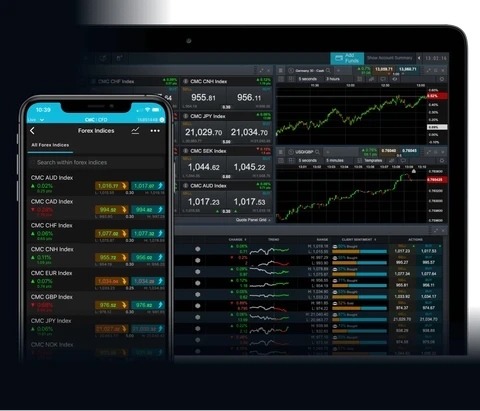Introduction
Understanding how to read Forex quotes is fundamental for anyone entering the world of currency trading. Forex quotes provide valuable information about currency pairs and their exchange rates. Additionally, the spread, a key concept in Forex trading, plays a crucial role in determining trading costs. This guide aims to demystify Forex quotes and shed light on the concept of spread.
Reading a Forex Quote
A Forex quote provides information about the exchange rate between two currencies. The quote consists of two prices: the bid price and the ask price.
1. Bid Price:
The bid price represents the maximum price that a buyer is willing to pay for a currency pair. It is the price at which traders can sell the base currency.
2. Ask Price:
The ask price, on the other hand, is the minimum price at which a seller is willing to sell a currency pair. It is the price at which traders can buy the base currency.
Example of a Forex Quote:
EUR/USD: 1.1200/1.1202
Bid Price (Sell): 1.1200Ask Price (Buy): 1.1202In this example, if you want to sell Euros (EUR), you would receive 1.1200 U.S. Dollars (USD) per Euro. If you want to buy Euros, you would pay 1.1202 USD per Euro.
Understanding the Spread
The difference between the bid and ask prices is known as the spread. The spread represents the cost of executing a trade and serves as compensation for the broker's services.
Calculating Spread:
Spread = Ask Price - Bid Price
Significance of Spread:
Tight Spread: A small difference between the bid and ask prices. It is favorable for traders as it reduces trading costs.
Wide Spread: A larger difference between the bid and ask prices. It can increase trading costs and may indicate lower liquidity in the market.
Factors Affecting Spread
Several factors can impact the spread in the Forex market:
1. Market Liquidity:
High liquidity often results in tighter spreads as there are more buyers and sellers in the market.
2. Volatility:
During periods of high volatility, such as major economic releases, spreads may widen as market uncertainty increases.
3. Time of Day:
The Forex market operates 24 hours a day, and spreads can vary depending on the time of day. The most liquid and tightest spreads are often observed during the overlap of major trading sessions.
4. Currency Pair:
Major currency pairs, like EUR/USD, tend to have tighter spreads due to high liquidity. Exotic or less-traded currency pairs may have wider spreads.
Trading Strategies with Spread Considerations
1. Scalping:
Scalpers aim to make small profits from short-term price movements. They often prefer tight spreads to minimize costs.
2. Day Trading:
Day traders may also benefit from tight spreads, especially when making multiple trades within a single day.
3. Swing Trading:
Swing traders, who hold positions for days or weeks, may be less sensitive to spreads but still consider them in their overall trading costs.
4. Long-Term Investing:
Long-term investors may be less concerned about spreads, as they are more focused on the overall trend and fundamentals of a currency pair.
Conclusion
Reading Forex quotes and understanding the spread is essential for effective currency trading. It provides valuable insights into the costs associated with executing trades and helps traders choose the most suitable currency pairs and trading strategies. By grasping the bid and ask prices, calculating the spread, and considering the factors influencing spread variations, traders can navigate the Forex market more confidently and make informed decisions to optimize their trading experience.



